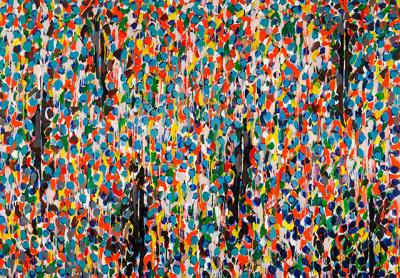An Anniversary in 70 Pieces

The Parrish Art Museum will mark five years at its current site in Water Mill this fall, and is already in a celebratory frame of mind. The museum, designed by the Swiss architecture firm Herzog and de Meuron and completed in 2012, has launched a show looking back on 70 of the 300 works it has acquired since then.
“Parrish Perspectives: New Works in Context,” which is on view only briefly (it will close April 23), features works from a variety of mediums, among them paintings, sculpture, and works on paper. They range from 1925 to 2016, a broad scope for such a microcosm.
A series of concentrated exhibitions offered by the museum over the past few springs, “Parrish Perspectives” often responds to recent events or ideas related to art or the creative process. “New Works in Context” is organized into four themes: “Representing Abstraction,” “Humor and Irony,” “Horizon Lines,” and “Face to Face.”
“Representing Abstraction,” according to the museum, “reveals the ways in which artists explore how the physical and philosophical universe is perceived.” It examines several different approaches to abstraction, with works inspired by nature, geometric patterns, and photography.
“Humor and Irony,” according to its organizers, “conveys dry wit, absurdity, dark humor, and the dichotomy that can exist in a single work.” Whimsical figures, satire, and visual puns are on offer.
The genre of “Face to Face” is portraiture — how portraits can vary from recognizable figures to more abstracted compositions, and by using symbols exclusively to refer to a subject.
“Horizon Lines,” one of the most basic of artistic drawing devices, becomes a reflection on its employment in all mediums. It is explored “as a quick study of the sea and the sky, a detailed imagining of the intersection of man and nature, or a long engagement with the notion of photographic documentation.”
The works on view are both recognizable by their previous inclusion in permanent-collection shows and also refreshingly new. The exhibition’s aim is to give viewers insight into the decisions made in forming and adding to a collection, and how artworks respond to each other in various contexts.
